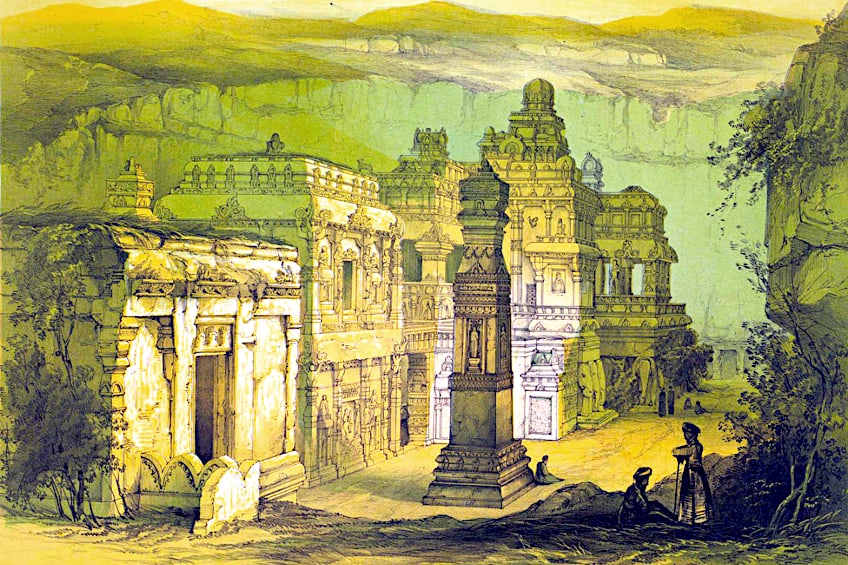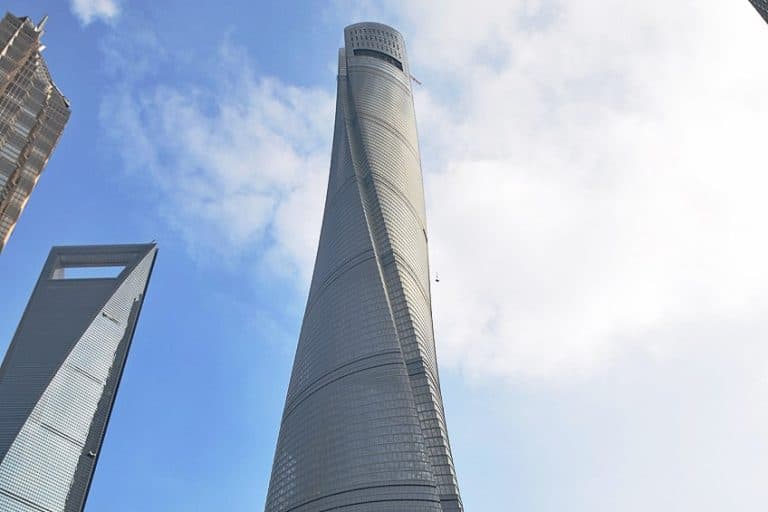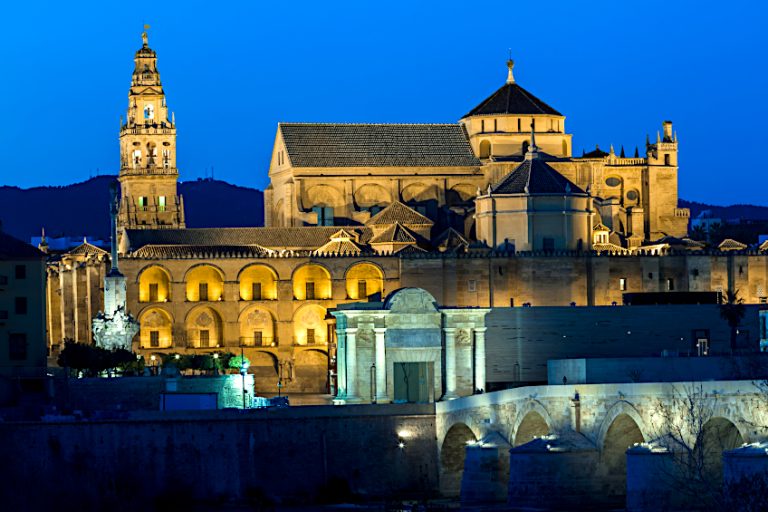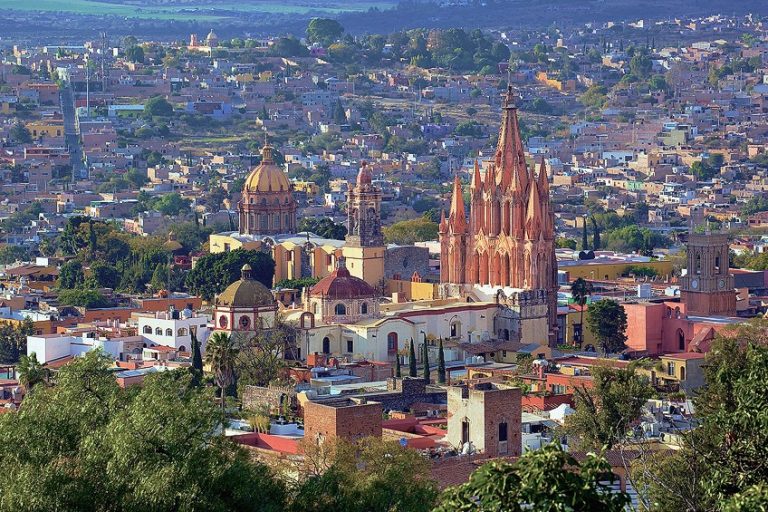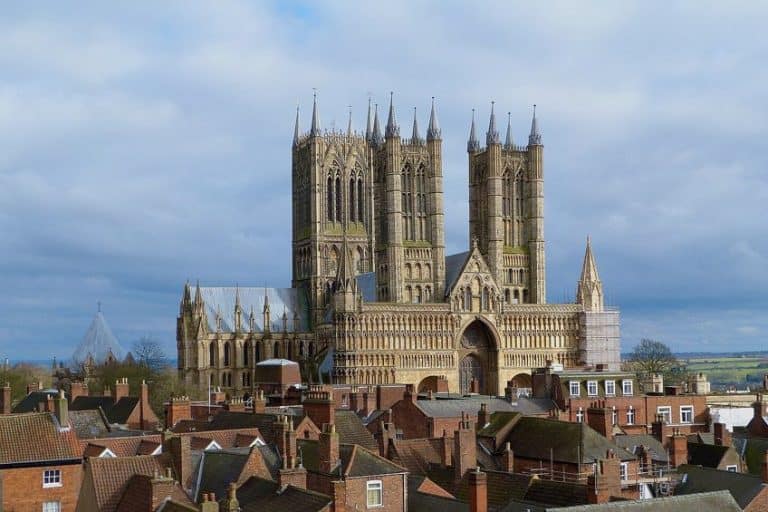Kailasa Temple at Ellora – The Shrine Carved from a Single Rock
Where is the Kailash Temple situated and what is it? This famous structure is a temple carved into a mountain and this single-stone temple in India is regarded as one of the country’s most stunning cave structures. The massive stone edifice is located at the Ellora Caves, a collection of 34 monasteries and temples. If you are interested in discovering all there is to know about the Kailasa Temple at Ellora, then read on!
The Kailasa Temple at Ellora
| Architect | Krishna I (c. 8th century CE) |
| Date Built | c. 8th century CE |
| Function | Temple |
| Materials | Basalt |
| Location | Ellora Caves, Aurangabad District, Maharashtra, India |
The caves, located in Maharashtra’s western area, is a UNESCO World Heritage Site with structures ranging in age from 600 to 1000 CE. While there are several spectacular constructions on-site, probably the most well-known is the massive stone Kailasa temple.
It is unclear who commissioned the construction of the Kailasa Temple at Ellora Caves, which is known for its huge vastness and spectacular decoration. Whereas no written documents were kept, researchers usually credit the construction to Rachtrakuta monarch Krishna I.
This provenance is based on various epigraphs that connect the structure to “Krishnaraja”, despite nothing ever being written explicitly about the monarch mentioning the temple. It is regarded as one of the most spectacular cave temples in the world due to its scale, construction, and sculptural application, and “the apex of the rock-cut period of architecture. in India”. Even though the rock slopes gradually from the rear to the front of the temple, the apex of the structure above the temple is 32.6 meters above the surface of the courtyard below.
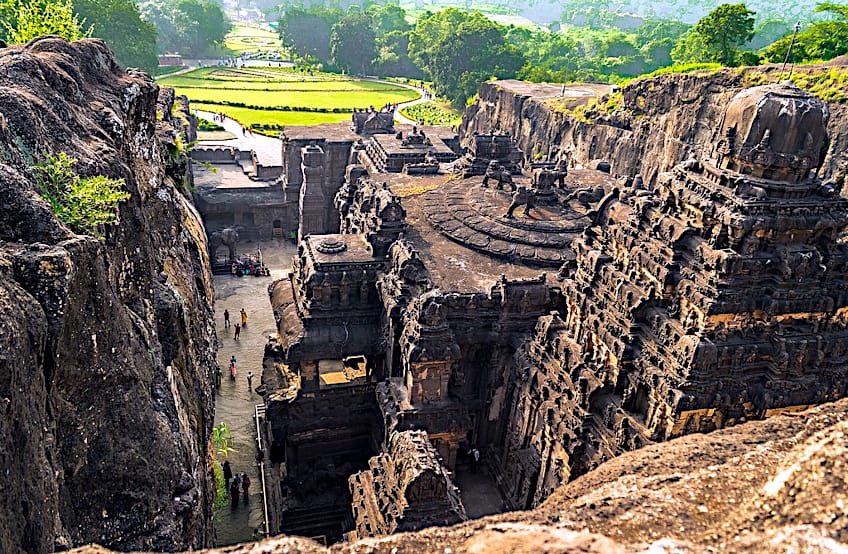
Archaeologists believe the temple was carved from a single piece of basalt rock. The Kailasa temple is the biggest of the 34 Jain, Buddhist, and Hindu cave monasteries and temples referred to as the Ellora Caves, which stretch for nearly two kilometers down the site’s sloping basalt rock.
The temple building has elements of the Chalukya and Pallava styles. The temple has a multitude of free-standing as well as relief sculptures on a large scale equivalent to the architecture, though only remnants of the original paintwork survive.
History of the Kailasa Temple at Ellora
The temple lacks a devotional inscription, although it was undoubtedly constructed by a Rashtrakuta monarch. Relying on two epigraphs that relate the temple to “Krishnaraja”, its construction is typically assigned to Rashtrakuta ruler Krishna I. Karkaraja II’s Vadodara copper-plate inscription (c. 813 CE) chronicles the donation of a hamlet in modern-day Gujarat. It mentions Krishnaraja as Kailasanatha’s benefactor, as well as a Shiva temple in Ellora Caves.
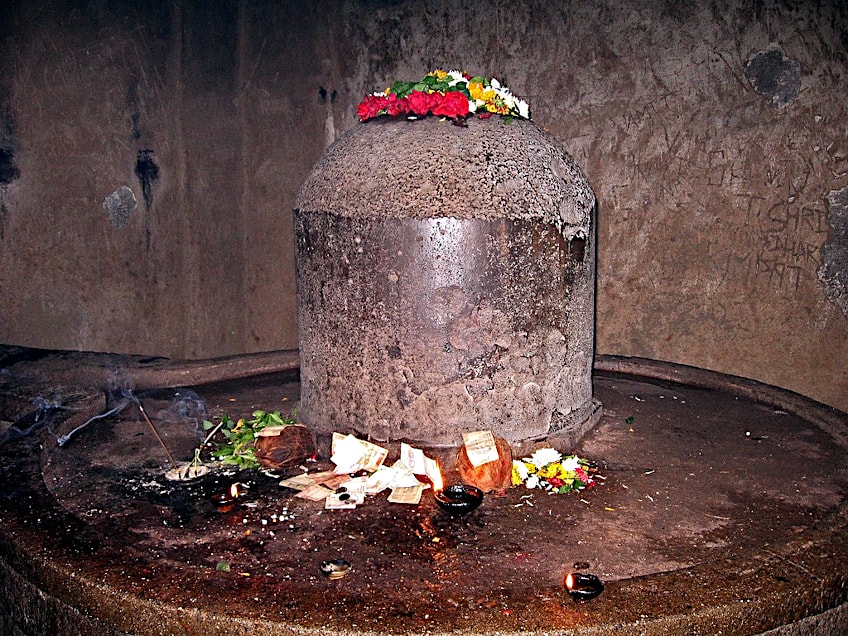
It is said that the ruler built a temple so magnificent that even the deities and the designer were taken aback. Most academics believe this is an allusion to Ellora’s Kailasa Shiva temple.
Style Influences
Krishnaraja appears to have built the temple according to the Kadaba grant of Govinda Prabhutavarsha. Yet, the temple’s assignment to Krishna I is not confirmed since the epigraphs were not permanently affixed to the structures, and are not dated from Krishnaraja’s reign. Furthermore, the land concessions granted by Krishna’s successors include no mention of the Kailasa temple.
The Kailasa temple employs a variety of sculptural and architectural styles. This, together with its very enormous size, has led some academics to think that it was built over the reigns of several monarchs.
Some of the temple reliefs are done in the same manner as the Dashavatara cave, which is near the temple. An inscription of Krishna’s predecessors and nephew Dantidurga may be seen in the Dashavatara cave. Predicated on this, Hermann Goetz, the art historian, hypothesized that the Kailasa temple was built during the reign of Dantidurga. Krishna dedicated its first full version, which was significantly smaller than the current temple.
Dantidurga’s contribution to temple building must have been purposefully repressed, as Krishna dismissed Dantidurga’s sons to gain the crown following his death.
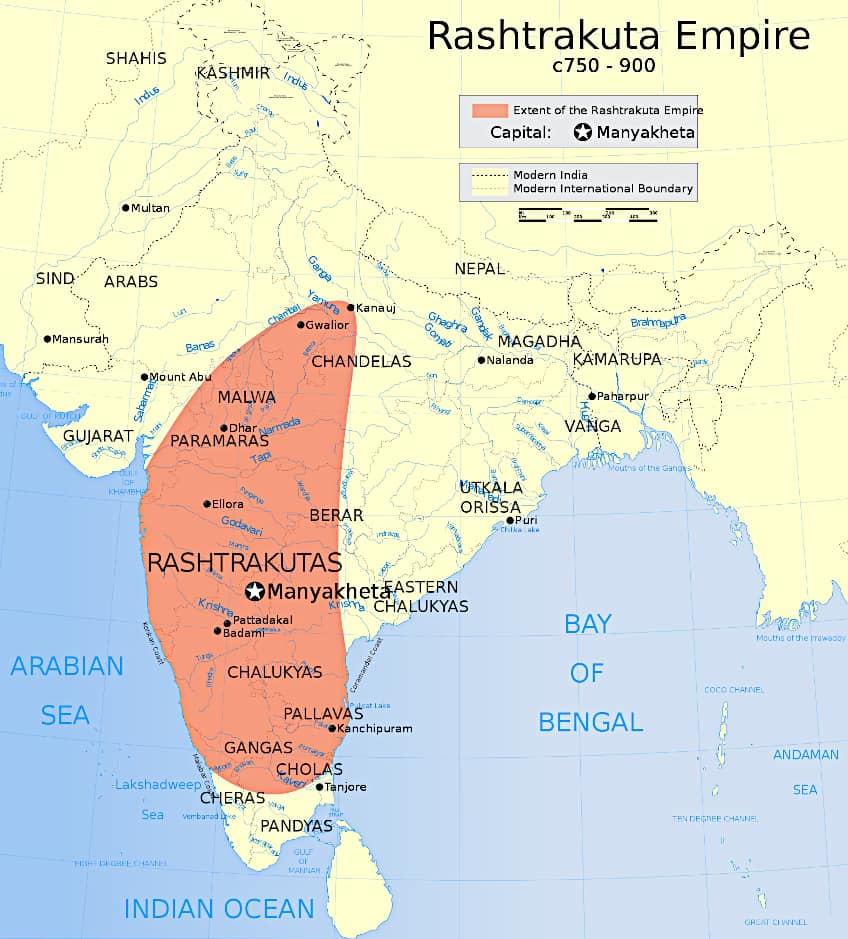
Goetz postulated that the subsequent Rashtrakuta monarchs also enlarged the temple based on an examination of the varied styles. Govinda III, Dhruva Dharavarsha, Amoghavarsha, and Krishna III were among these monarchs. According to Goetz, during his conquest of Deccan in the 11th century, the elephant-lion fresco on the bottom plinth was ordered and a fresh layer of images was created. Ahilyabai Holkar sponsored the temple’s final layer of artwork.
Dating
K. Dhavalikar examined the temple’s construction and found that the majority of it was constructed during Krishna I’s reign, however, he agreed with Goetz that certain other elements of the temple complex may be dated to subsequent monarchs. Krishna, according to Dhavalikar, finished the following parts: the main temple, its doorway, the lower floor, the Nandi-mandapa, the court elephants, the elephant-lion frieze, and the victory pillars. Dhavalikar agrees that the temple’s most prominent sculpture, depicting Ravana rattling the Kailash mountain, looks to have been created after the main structure.
The artwork is regarded as among the best examples of Indian artwork, and it is conceivable that the structure was named after it.
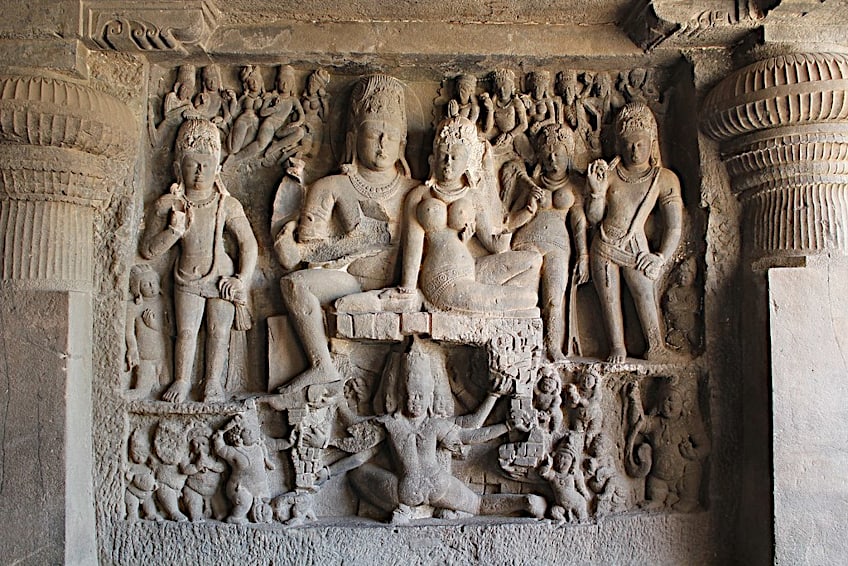
Dhavalikar hypothesizes that this artwork was carved three to four decades after the main temple was completed, based on its resemblance to the Tandava statue in the Lankeshvar cave. H. Goetz assigned this relief to Krishna III’s reign. Dhavalikar, like Goetz, traces portions of the temple complex’s construction to subsequent monarchs. This includes the Lankeshvar cave and the river deity shrine. According to Dhavalikar, the excavation of the Dashavatara cave started during Dantidurga’s reign and was finished during the rule of Krishna I. This explains why the carvings in the two caves are so similar.
Influence of the Pallava and Chalukya
According to Dhavalikar, no significant feature of the temple seems to have been an afterthought: architectural information implies that the complete temple was designed from the start. The primary shrine is nearly identical to Pattadakal’s Virupaksha Temple, which itself is a duplicate of Kanchi’s Kailasa Temple. The Badami Chalukyas constructed the Pattadakal Virupaksha Temple to celebrate their triumph against the Pallavas, who were responsible for the construction of the Kailasa temple in Kanchi. As stated in the Virupaksha temple inscriptions, after conquering the Pallavas, the Chalukyas took the Pallava painters to Pattadakal. According to Dhavalikar, after conquering the Chalukyas, Krishna would have been pleased with the Virupaksha Temple, which is located in their realm.
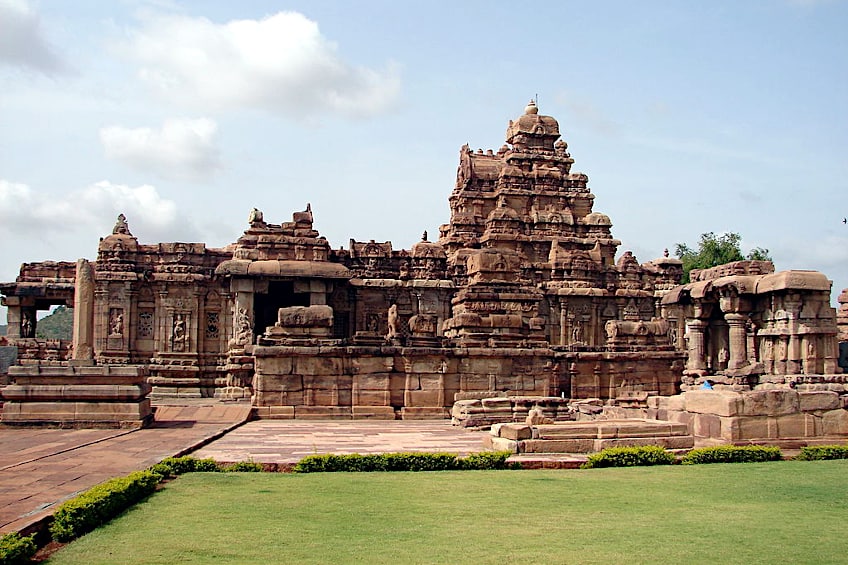
The building of a massive temple during the lifetime of a single ruler does not seem to be impossible, especially if the builders of the Virupaksha temple collaborated on the erection of the Kailasa temple. The designers had a plan and a model, which could potentially have substantially cut down the time and work needed to build a new temple.
Furthermore, excavating a monolithic temple would have required less labor than moving huge stones to construct a new temple of the same scale. Dhavalikar calculated that 250 laborers would have been enough to complete the Kailasa temple at Ellora in five and a half years if one person could cut roughly 4 cubic feet of rock every day. The prevalence of non-Rashtrakuta designs in the temple can be linked to Pallava and Chalukya artists’ contributions.
Method of Construction
The Kailasa Temple’s vertical excavation is noteworthy; the rock’s summit was where the carvers started, then they bore down. Digging from the front would not have been possible since the master architect meticulously followed the process. The building of the structure seems to be mentioned in medieval Marathi mythology.
The earliest surviving literature mentioning this narrative is Krishna Yajnavalki’s Katha-Kalapataru.
According to folklore, the native ruler was afflicted with a horrible sickness. His queen appealed to the deity Shiva to heal her husband at Elapura. She committed to building a temple if her desire were realized, and she vowed to fast until she was able to reach the top of the structure. After the king had recovered, she asked him to construct a shrine right away, but numerous architects said it would take several months to erect a temple with a shikhara. Within a week, according to an architect by the name of Kokasa, the queen would be able to see the temple’s shikhara built.
He began constructing the temple from the top down, cutting into the rock. In less than a week, he finished the shikhara, enabling the queen to end her fasting. The temple was dedicated to the queen, Manikeshwar.
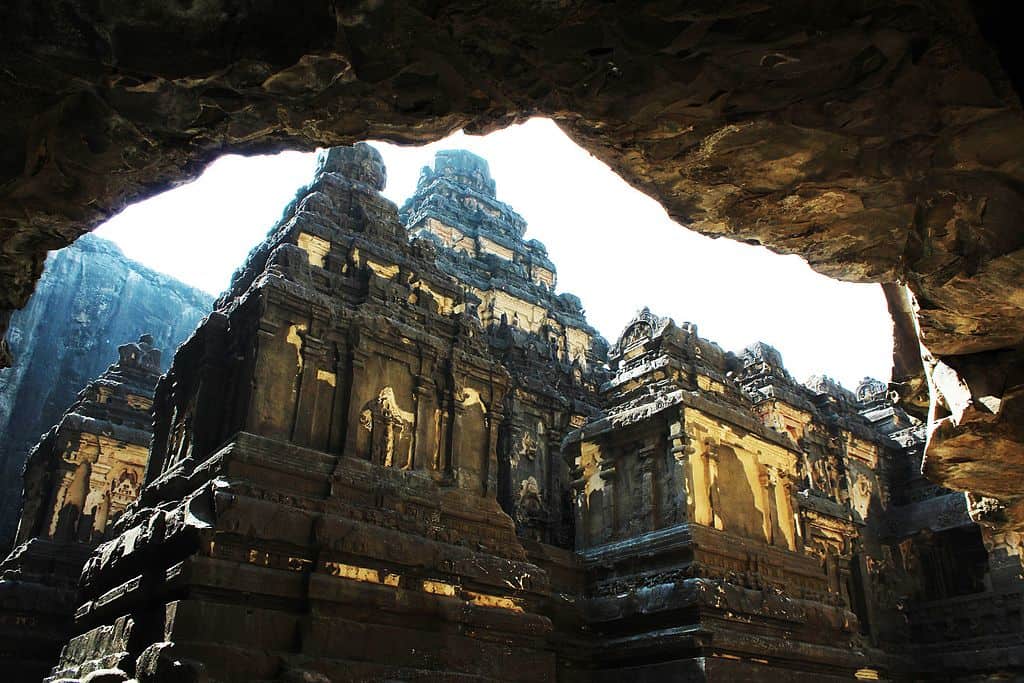
Though based on mythology, in reality, the temple was actually built from the top down. This extraordinary choice required the removal of 400,000 tons of volcanic rock. Historians agree that it was built in fewer than 18 years. That implies that in ancient days, 400,000 tons of hard rock were carved out using simple tools like hammers and cutters, and the temple was finished with gorgeous and detailed carvings in just 18 years. A courtyard with a tower at its entrance stands roughly three floors tall.
Given the temple’s immense size and exquisite ornamentation, it’s thought that the construction began with Krishna I but might have continued for centuries, with each monarch adding their own flair.
According to M. K. Dhavalikar, Kokasa was the principal designer of the Kailasa temple at Ellora, which was once known as Manikeshwar. Multiple inscriptions from the 11th to 13th centuries from central India describe builders who emerged from the famed Kokasa dynasty.
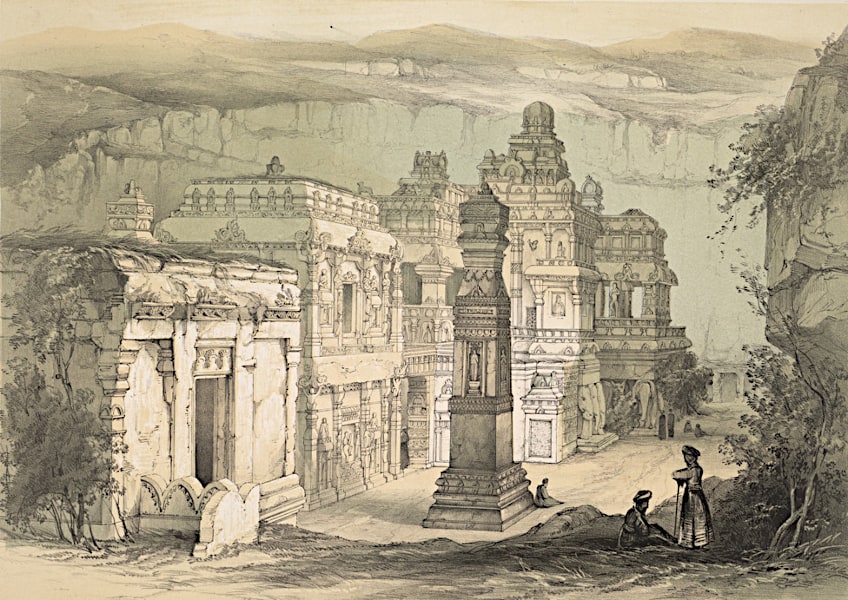
The Architecture of the Temple Carved Into a Mountain
The Kailasa temple’s architecture is distinct from the previous design prevalent in the Deccan region. It appears to be modeled on the Virupaksha Temple and the Kailasa Temple in Kanchi, although it is not an identical replica of these two temples. The presence of Pallava and Chalukya craftsmen in the building explains the presence of a southern influence on the temple’s architecture. Native Deccan craftsmen appear to have played a limited role in the temple’s building.
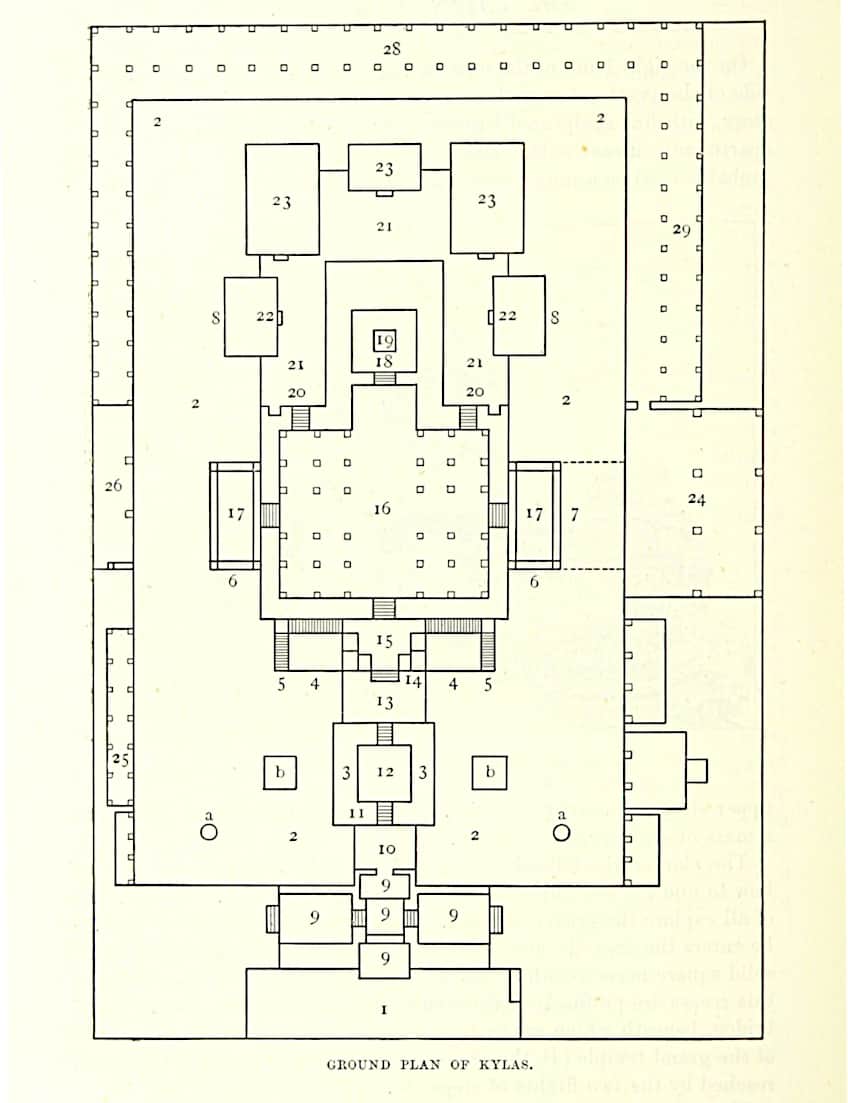
A gopuram guards the entryway to the temple’s courtyard. The majority of the left-side deities of the entryway are Shaivaite, while the right-side deities are Vaishnavaite. A two-story doorway leads to a U-shaped courtyard. The courtyard is 82 by 46 meters at its widest point. A three-story-high columned arcade surrounds the courtyard.
The arcades are divided by massive alcoves bearing massive statues of various deities. Initially, stone flying bridges joined these galleries to the primary temple complexes, but they have since collapsed.
Various versions of the deity, such as Shiva as the dancer, Shiva as the ascetic, and river deity are among the most renowned sculptures. The courtyard contains a Shiva shrine with a statue of his horse Nandi in the center. A Dravidian shikhara and a flat-roofed mandapa with 16 pillars support the lingam-containing main shrine.
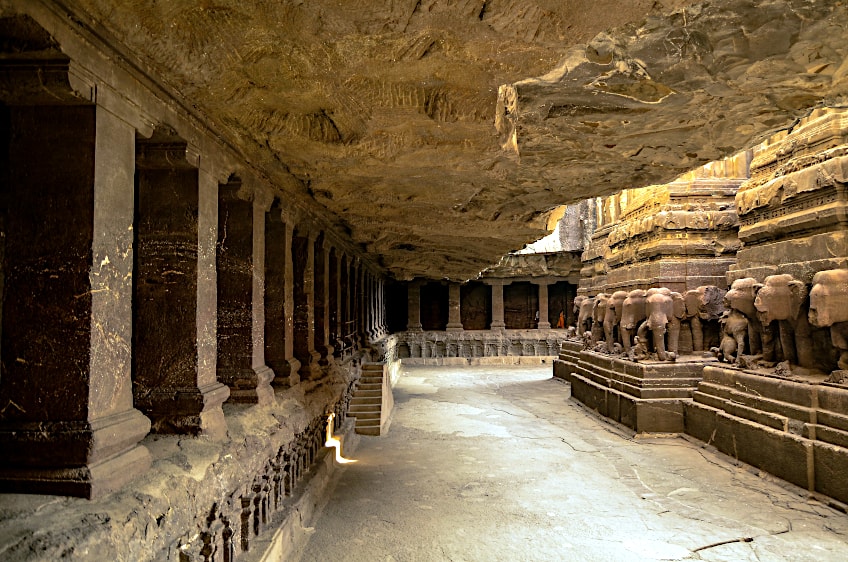
The shrine is carved with plasters, niches, windows, pictures of deities, and sensual female and male figures, as well as pillars, windows, inner and exterior chambers, gathering halls, and a gigantic stone lingam at its core.
Nandi rests on a portico in front of the primary shrine, as is the tradition in Shiva temples. The Nandi mandapa and major Shiva temple are both roughly 7 meters high and two stories tall. The Nandi Mandapa’s lower levels are both substantial constructions with extensive illustrative sculptures. The base has been sculpted to seem like elephants are carrying the building. A rock bridge crosses the Nandi Mandapa to the porch of the temple. The temple hall’s foundation was adorned with scenes from the Ramayana and Mahabharata.
Interesting Facts About the Kailasa Temple at Ellora
The temple’s exact building date is unknown. The granite is thought to be roughly 6,000 years old, but when it was cut into a temple is unknown. This entire temple is composed of a single rock. Not a single rock was linked individually for any structure or support. Can you imagine how they built intricate balconies, bridges, multi-level staircases, drainage, subterranean tunnels, and water collecting systems? Here are some more of our favorite facts about the Kailasa Temple at Ellora Caves.
It Is the Largest Monolithic Structure in the World
Ellora Caves is well-known for the world’s biggest single monolithic excavation, the colossal Kailasa Temple. Dedicated to Lord Shiva, The Great Kailasa is a multi-level freestanding temple.

The marvel of this 1300-year-old architectural masterpiece is that it is fashioned out of one basaltic rock and is recognized as the largest monolithic work of art not only in India but as well as all around the globe.
Even the statues at this intriguing temple are sculpted from the same chunk of granite as the remainder of the building. The temple building has elements of the Chalukya and Pallava styles.
It Is a Representation of Mount Kailash
The temple’s architecture, dedicated to Lord Shiva, reminds one of the sacred Mount Kailash, the mysterious dwelling of the god. Two inner courtyards surround the entrance, each with a massive stone elephant and 15-meter-tall triumph pillars. Nandi, the holy bull, is shown facing the Shivalinga. The main Shiva temple is 7 meters tall and built on two levels. The base level provides the impression that elephants are keeping the entire edifice together.
Originally, this edifice was covered in a thick coating of white plaster to resemble the sacred mountain Kailash, and some remnants of this plaster exist today.
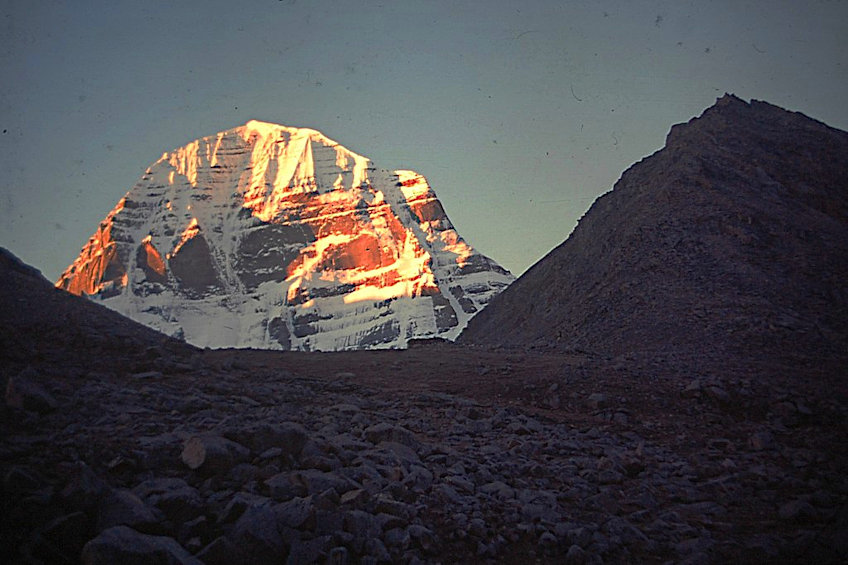
It Is Larger Than the Parthenon
Kailash Temple is recognized as one of India’s most magnificent cave temples because of its enormous dimensions, architecture, and sculptural execution. Kailash Temple is 44 meters wide, 59 meters long, and 27 meters high, covering an area double that of the famous Parthenon in Athens.
The Kailas, in the Cave Temples of Ellora, Western India by the special artist correspondent for the The Illustrated London News (1876); 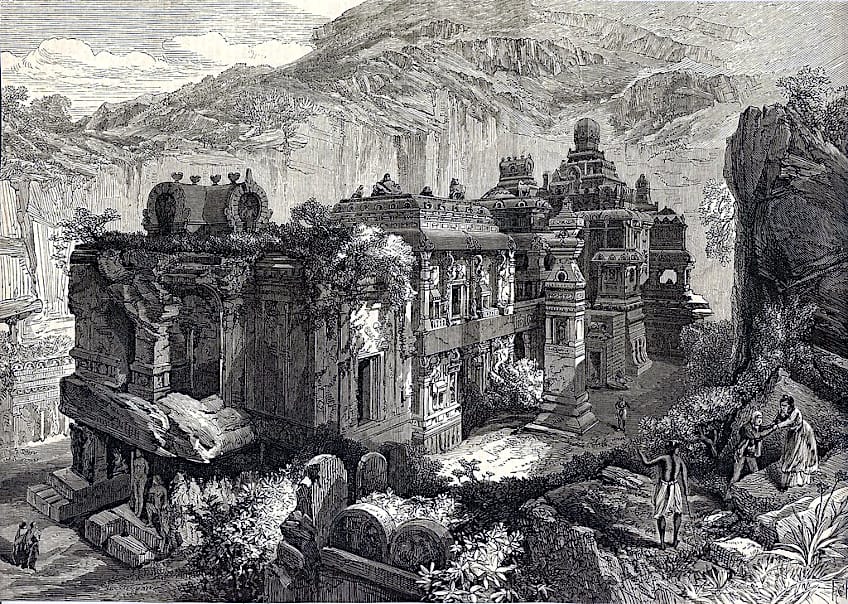
The famous temple is one of the largest buildings in India and the entire globe, rivaling even the Taj Mahal in Agra, with its enormously carved monolithic main shrine in the center, gopura, and enclosing walls on all sides.
It Is Said to be Indestructible
There is an intriguing story concerning Ellora’s Kailasa Temple. Aurangzeb, the Mughal emperor who demolished thousands of Hindu temples, also attempted to destroy the Kailasa temple.
It is said that around 1,000 soldiers were sent to destroy the temple in the year 1682. They worked for three years but could only shatter and dismember a few sculptures.
Aurangzeb eventually gave up on this attempt, realizing that he was unable to entirely destroy the temple because the rock was just too hard to dismantle, despite the fact that artisans built it with only chisels, hammers, and picks.
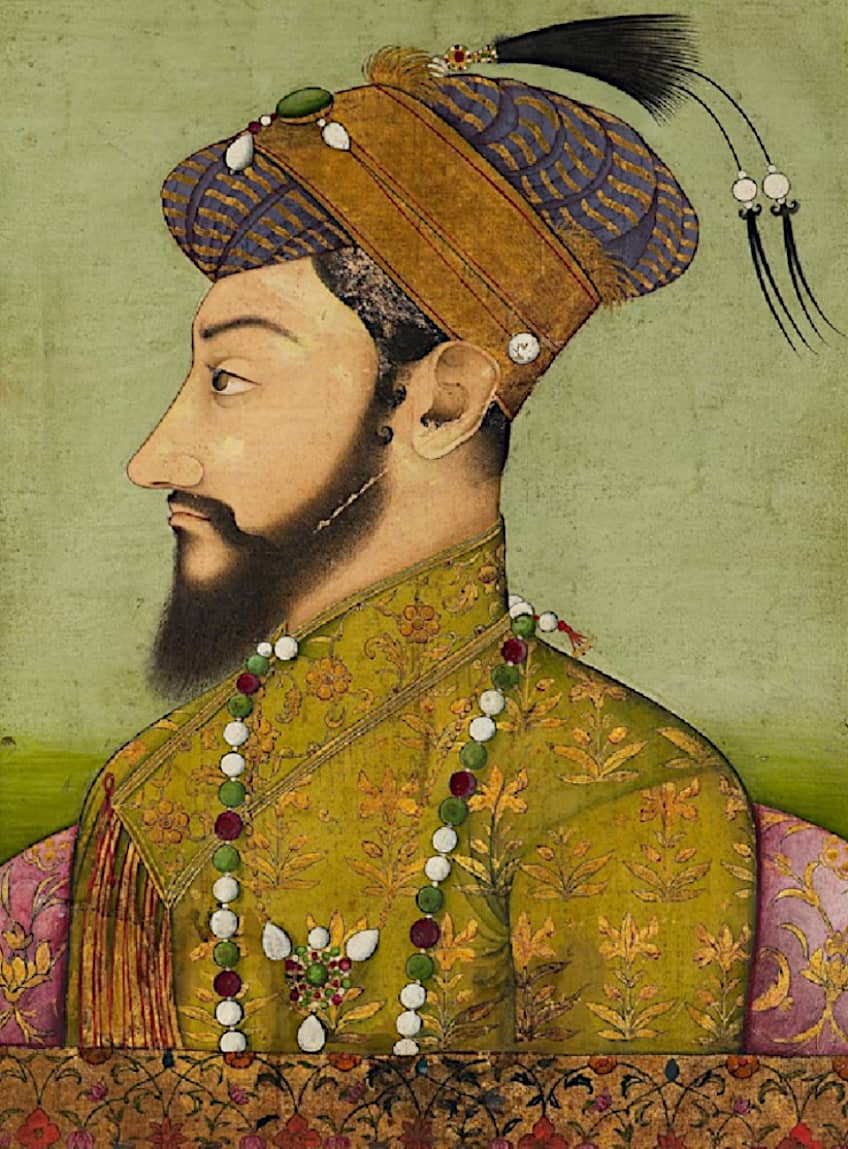
The Kailasa Temple at Ellora, which resembles Mount Kailash, the residence of Lord Shiva, is said to have been erected around 773 CE by Rashtrakuta King Krishna I. This single-stone temple in India is thought to be the world’s biggest monolithic construction. It can be found almost 30 kilometers from the city of Aurangabad in the Indian subcontinent’s Maharashtra state. Archaeologists further argue that the design is very comparable to the Virupaksha Temple. However similar to other structures, one cannot dent the awe-inspiring beauty and craftsmanship that went into its construction.
Frequently Asked Questions
Where Is the Kailasa Temple Situated?
The Kailasa Temple is among the 34 monasteries that comprise the Ellora Caves, which is considered to be among the most popular tourist sites in all of Maharashtra. It is recognized as one of the world’s largest single monolithic discoveries and one of India’s most incredible ancient temples. It is a megalith carved out of a single rock. Aside from its immensity, the temple is notable for its sculptures and the excellent craftsmanship of its other architectural aspects.
How Was the Temple Carved Into a Mountain?
Kailasa Temple’s architecture is famous for its vertical excavation, which began at the top and progressed downhill, rolling down enormous rocks broken off the mountain using steel rod drills. The drill marks left on the adjacent walls may still be seen. The Kailasa Temple is a megalith cut out of a single rock. Every single pattern and measurement was meticulously prepared since once cut, there was no way to modify it by adding an extra stone or piece of rock. According to legend, almost 400,000 tonnes of rock were removed to build this monolithic edifice. This is the world’s only temple where carvers began at the top of the rock and worked their way down. The remainder of the world’s rock structures is built by cutting the rock or mountain from the front and sculpting it as they go. This is a typically utilized method for creating any construction out of a rock or mountain. It is known as the Cut-In technique, whereas Kailasa Temple is the only temple built employing the exact opposite technique known as Cut-Out.
How Long Did It Take to Build the Temple Carved into a Mountain?
The Kailasa Temple was apparently built by Rashtrakuta monarch Krishna I in 773 CE and has intrigued academics and travelers for generations. The archaeologists estimated that it could have taken more than a century to complete the temple building. However, it only took 18 years to finish. The rock-cut temple was cut at the back in a U shape, and over 400,000 tonnes of rock were carved out of a steep cliff of basalt in the Charanandri Hills to build the beautiful temple. Archeologists are still attempting to figure out how the temple was created, chiseled out of the rocks, utilizing ancient conventional methods and no contemporary technology in such a short amount of time.
Are There Any Sculptures at the Kailasa Temple?
Ellora Caves have exquisite carvings and sculptures on almost every inch of the internal structure, displaying aesthetic richness and philosophy, making the caves a notable accomplishment of ancient Indian culture. The figure of Nandi, four statues of lions positioned in a circle on the top of Mahamantapa, and elephant carvings at the foot of the shrine, which give the observer the illusion that the entire edifice is carried on the backs of these beasts, are among the most notable. Moreover, the Kailasa Temple contains a number of beautifully carved panels representing episodes from the two great Hindu epics, the Ramayana and the Mahabharata, as well as ten panels depicting the many incarnations of the Hindu god Vishnu.
Justin van Huyssteen is a freelance writer, novelist, and academic originally from Cape Town, South Africa. At present, he has a bachelor’s degree in English and literary theory and an honor’s degree in literary theory. He is currently working towards his master’s degree in literary theory with a focus on animal studies, critical theory, and semiotics within literature. As a novelist and freelancer, he often writes under the pen name L.C. Lupus.
Justin’s preferred literary movements include modern and postmodern literature with literary fiction and genre fiction like sci-fi, post-apocalyptic, and horror being of particular interest. His academia extends to his interest in prose and narratology. He enjoys analyzing a variety of mediums through a literary lens, such as graphic novels, film, and video games.
Justin is working for artincontext.org as an author and content writer since 2022. He is responsible for all blog posts about architecture, literature and poetry.
Learn more about Justin van Huyssteen and the Art in Context Team.
Cite this Article
Justin, van Huyssteen, “Kailasa Temple at Ellora – The Shrine Carved from a Single Rock.” Art in Context. June 14, 2023. URL: https://artincontext.org/kailasa-temple-at-ellora/
van Huyssteen, J. (2023, 14 June). Kailasa Temple at Ellora – The Shrine Carved from a Single Rock. Art in Context. https://artincontext.org/kailasa-temple-at-ellora/
van Huyssteen, Justin. “Kailasa Temple at Ellora – The Shrine Carved from a Single Rock.” Art in Context, June 14, 2023. https://artincontext.org/kailasa-temple-at-ellora/.


